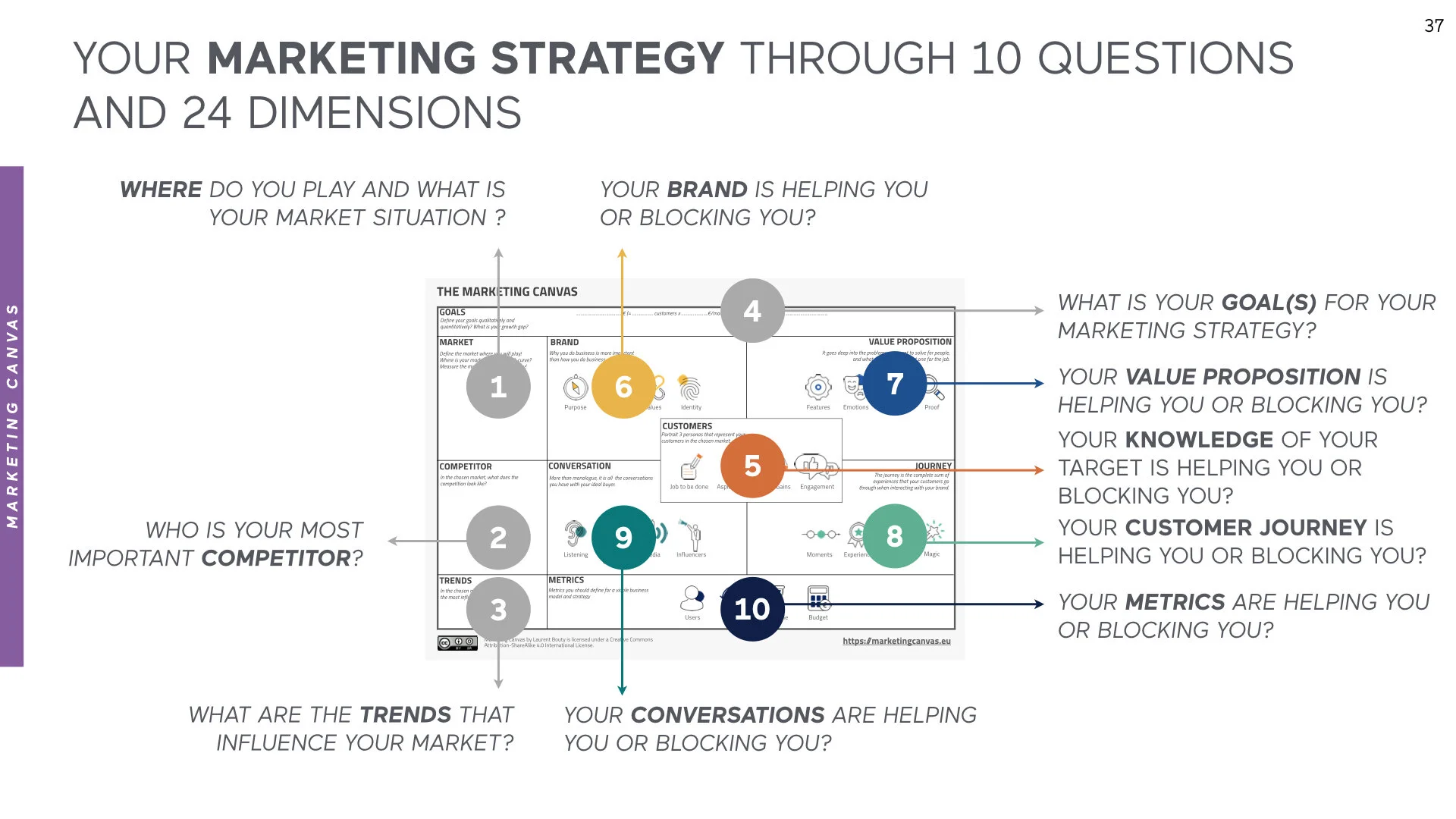If you want to design the marketing strategy for your business, you should first start to analyse where you will play. What does it mean? It means that your product/service will be associated by consumers/buyers with other alternatives they have on the market (maybe no alternative exists which means that you creating a new category also referred as a blue ocean).
The Context of your Marketing strategy is the first element you analysed with the Marketing Canvas Method. It is composed by 3 distinctive elements: Category, Competitors and Trends (questions 1 & 3).
Marketing Canvas Method in 10 questions
The key questions you should ask yourself before you investigate what might be your scenarios for your strategy.
Identify the strategy where you would like to play. TESLA could have chosen the category where most of the electrical car offers where made. TESLA decided to enter the Segment F (Luxury saloon / full-size luxury sedan).
Key needs. What are the identified needs that customers/buyers are addressing when buying products/services in this category (pains/gains/functional needs).
Competitors. If not you, you else? It could be a competitor or a substitute. In the segment F, key competitors of TESLA are: BMW, Mercedes, Jaguar, Lexus, Audi, Porsche….
Rules of the category like average price, core features and add-ons, payment scheme/subscription model, buyer power. Price of a Porsche is around 100k€ which is the starting price point where TESLA positioned itself.
Category dynamic. What is the state of the category (few buyers/consumers or the market is saturated).
Marketing Strategy in Context
Examples:
Tesla has decided to enter the luxury segment where no real electrical car offer did exist (key needs were speed, design, social recognition).
Dove entered the cosmetic category where many alternatives existed
Apple entered the portable music device (with iPod) where the current offers where based on features and technologies but latent motives existed (social recognition, design and simplicity).
So before you investigate which options you should follow, you need first to answer these questions because it will set the scene. Then you can start investigating your scenarios using the Marketing Canvas Method.














